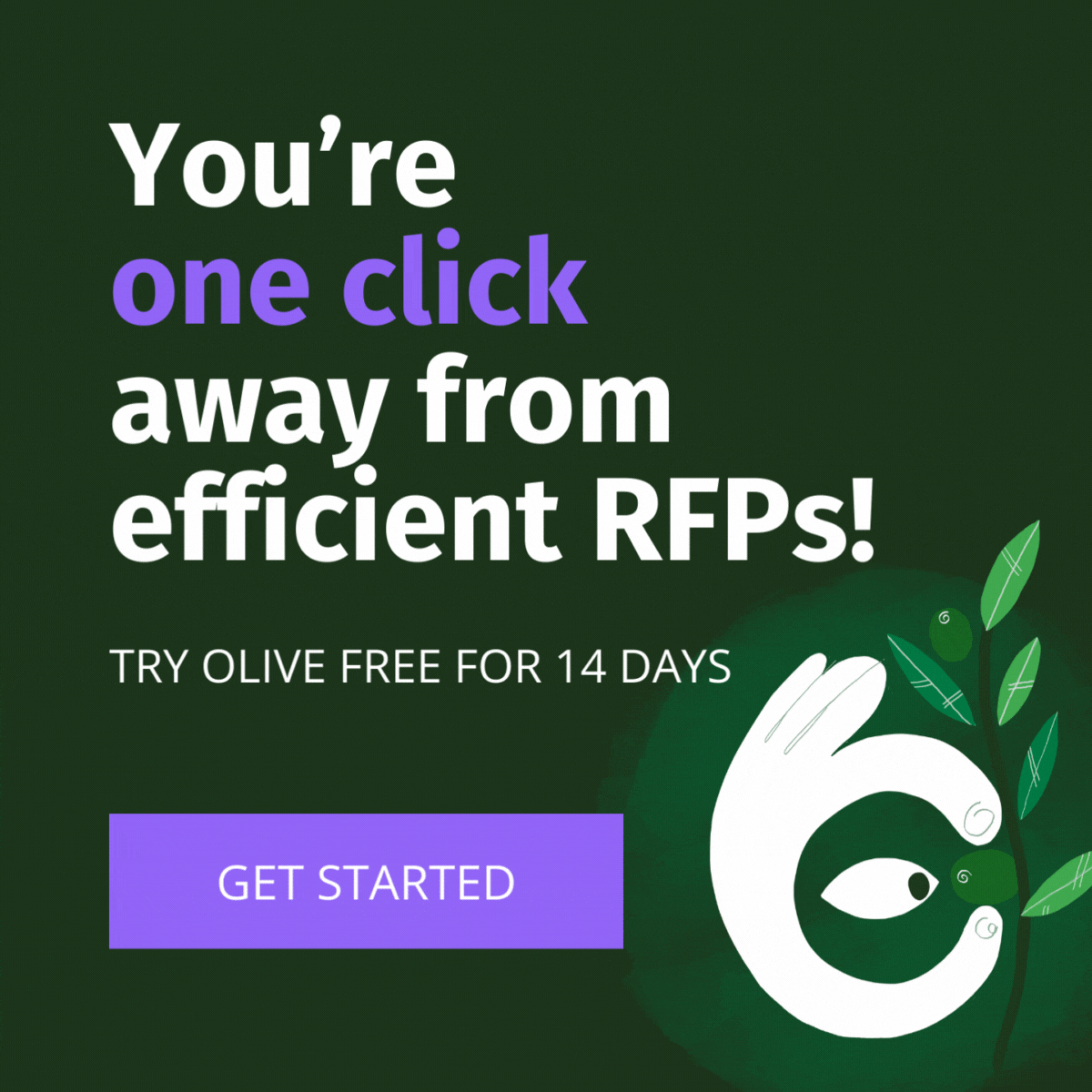Selecting enterprise software vendors to work with is a critical decision for any organization. At Olive, we’ve helped lots of organizations find their best-match Enterprise Software Vendors. Here, we’ve compiled 8 expert tips on getting the most out of the enterprise software vendor selection process.
1. Collaborate Upfront – Take the Time to Identify the Right Stakeholders
Engaging and aligning the right stakeholders for your requirements-gathering process for enterprise software selection projects drive digital transformation and results in high user adoption after implementation. Take your time to figure out who needs to be heard. Valuing the right voices creates a compounding benefit throughout the software buying process. Here are some stakeholders you should take the time to identify:
- End Users: End users include direct users who will interact with the software most frequently, indirect stakeholders that are impacted as a result of using the software, and beneficiaries who enjoy the fruits of the direct and secondary user labors. It goes without saying that end users are incredibly important stakeholders whose needs and wants need to be addressed throughout the process.
- Relevant Authorities and Decision Makers: Do you need to consult any governmental entities or authorities about your plans? For instance, the American State Bar prohibits the development or use of specific technologies without prior consent. The last thing you want to happen is to spend a lot of money on expensive software only to discover that you can’t use it because you lack the necessary authorization.
- The Project Team: Finding the best software to meet your user’s needs is the responsibility of the project team. They must be able to compile, incorporate, and arrange the demands of the required stakeholders. The team will determine what requirements are absolutely necessary and what requirements are nice to have once the requirements have been gathered. Finally, they must be able to evaluate the stakeholders and know which viewpoints to value.
2. Gather and Build Comprehensive Requirements
If you had to guess how many software projects fail because of poorly articulated requirements, what would you say? 71%. Requirement failure is the number one reason why technology and software implementation doesn’t go to plan. That’s why gathering and building comprehensive requirements is so vital to success. Here are some requirements-gathering tips to help you succeed:
- Appoint a Lead: Depending on the scale of the requirement-gathering process, you may need a project committee or a central source of leadership stewarding the process. This person should understand who the stakeholders are and what constitutes a good, well-written requirement.
- Define the Purpose and Goals of the Software: Ask questions such as: What problems are you solving? Why is it important? What do you expect to gain by implementing the solution? Take the time to articulate your objectives, so everyone is on board.
- Define your Stakeholders: Including your stakeholders in the process of gathering and giving feedback on requirements leads to high user adoption later.
- Software Requirement Elicitation: This process includes steps such as interviewing individual stakeholders, shadowing stakeholder processes, and hosting cross-functional meetings to ensure the best alignment possible.
- Document Everything: You will be getting requirements from a host of different sources and channels. Meeting minutes, feedback forms, shadow process notes, interview transcripts, email chains, and more will flood in. Everything should be recorded in a central document.
- Ranking Requirements: Once you have all the requirements gathered, categorized, and formatted, you must go back to the team for prioritization. Create a feedback form that will uncover the clear ranking order of each requirement.
- Write Requirements as Vendor Usable Requirements: The information and notes you take from stakeholders are highly unlikely to be in a vendor-appropriate format. Requirements must be written correctly. You will need to adjust the wording and break things down with specific, commonly used language.
3. Take Control of the Enterprise Software Vendor Selection Process
Whether you are the IT leader, the department head, or a consultant working for clients, you must carefully assess technology vendors in relation to the needs of the specific business and avoid letting biased software reviews or pushy salespeople gain too much control over the process.
To be effective, you must evaluate the current situation, get feedback on the business needs from important stakeholders, develop lists of requirements, evaluate each requirement’s viability, and develop an RFP. Although the process is time-consuming and frequently fraught with bias and risk, it is essential for successful transformation. You can make the vendor selection process more seamless by;
- determine a well-constructed business case for the technology solution,
- thoroughly understanding the needs of the business (and placing them at the center of the technology evaluation process)
- define and rank your requirements list for the technology to build out the vendor selection criteria
- Determine the ROI of the proposed technology by looking at the price vs. value
- Get to a shortlist of best-fit technology vendors, and wait until at least 3-5 meet your requirements before jumping into too many demos.
4. Make Cost – Effective Decisions
Knowing your tech stack’s ROI can help you determine which investments in technology are adding value to your business and which are draining your innovation budget. There may be opportunities to free up money for solutions that actually spur digital transformation if you are aware of exactly where your budget is being wasted on software that has low user adoption or cause issues across functional boundaries.
The most straightforward method of calculating test automation ROI is the following formula:
ROI = Gain – Investment ÷ Investment
Gain: The amount gained by replacing manual processes with automated processes. For example, for consultants calculating automating their consultancy with Olive’s technology, they can include gain factors such as saved hours gathering requirements and ranking requirements, less admin tasks, improved requirements traceability, and less wasting with long-winded RFP documents.
Investment: The costs funneled into setting up test automation pipelines.
5. Don’t Ignore Total Cost of Ownership (TCO)
The Total Cost of Ownership (TCO) for enterprise software is the sum of all direct and indirect costs incurred by that software and is a critical part of the ROI calculation. Unfortunately, TCO is often ignored or underestimated.
When calculating ROI, include TCO costs that can be incurred by your solutions;
- Software: Factor in costs per license number of licenses that will be needed in the future with expected growth. Off-the-shelf software usually has an up-front software cost plus user licenses. Remember to include any finance charges.
- Hardware: Costs like servers and storage to run the software and other expenses like backup and disaster recovery. (This does not apply to cloud software)
- Implementation: Any costs associated with the implementation. Setting up, configuring, and testing software so it can be used in production. Cost of training initiatives and employee support. With custom software, the configuration is usually part of development.
- Data migration: The cost of moving data from the old to the new system, including data format changes. Often this is not economically viable, so the old system is archived in a read-only mode.
6. Automate the RFI/RFP Process
Many organizations get the enterprise software selection process right – up until the RFI/RFP moment. This is because many still use outdated RFP platforms which are riddled with bias and exponentially slow down the process. Consider a tool such as Olive and experience the benefits of modern, efficient online RFP software. With Olive, you will experience automation and agility with your entire vendor selection process. From gathering requirements to collaboration with departments, keep all your data and insights in one online app. With a typical RFI, you send out a spreadsheet or document to a few vendors and hope for responses. With Olive, you can invite as many vendors as you want directly into the project. As they respond to your requirements and answer questions, you see the results and how well they score against your requirements and needs in real time. You can also manage and maintain vendor conversations within the app. Responses are automatically saved for traceability and due diligence. In-app chat allows stakeholders to review, score, and discuss vendor responses internally without the need for meetings and spreadsheets.
7. Get the Unbiased Facts you Need to Make the Right Decision
The software selection process has gained importance as organizations scramble to implement new technologies in order to boost productivity and produce profitable results. Sadly, bias can frequently creep into this process, producing less-than-ideal results and failing to fully consider all viable options. To avoid bias in the selection process, follow these steps:
- Establish clear criteria and a structured evaluation process: By defining the specific needs and requirements that a software option must meet, organizations can avoid the pitfalls of confirmation bias and the halo effect.
- Involve a diverse group of stakeholders in the evaluation process: Different perspectives and experiences can help to balance out biases and ensure a more comprehensive evaluation of options.
- Use data to drive your decision-making: Taking the time to identify the right stakeholders and gather and rank their requirements to solicit feedback directly from vendors will ensure your decision is based on your organization’s needs instead of biased reviews and analyst reports. Software selection tools like Olive facilitate this process with an extensive report that ensures every requirement can be traced. Use this due diligence to hold vendors accountable.
8. Innovate Your Internal Enterprise Software Vendor Selection Process with Olive
Let Olive be your guide in navigating this process. As a thought leader in technology sourcing, Olive offers an end-to-end platform that streamlines software vendor selection and assists you in finding the ideal solution for your organization’s unique needs.
Olive takes pride in its vendor-agnostic approach, allowing for an impartial and reliable assessment. Our focus is on empowering buyers like you to make low-risk informed decisions about your technology choices while saving you valuable time and resources.
At Olive, we believe in guiding organizations toward the best software options for their business. By leveraging our efficient and unbiased platform, you can be confident in the decisions you make.





